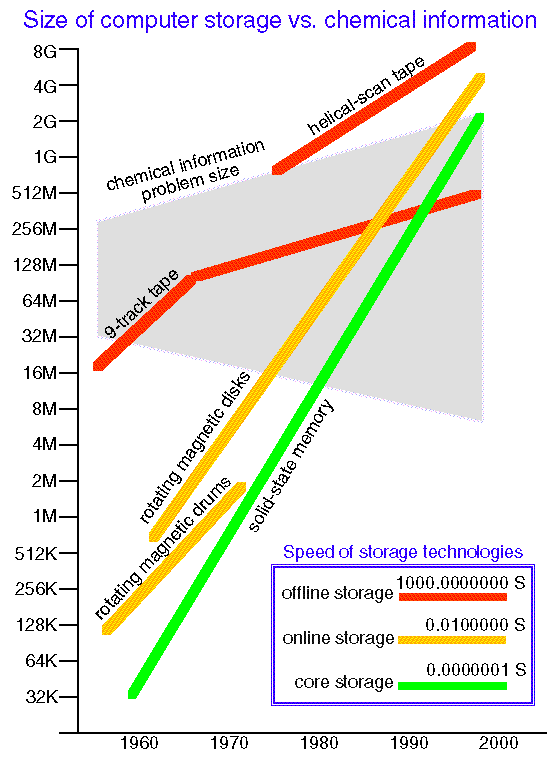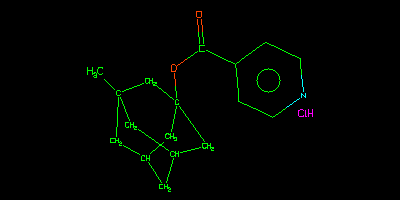
PyDaylight | |
More Science, Less Time |

|
|
This graph is from Dave's talk at
EuroMUG'98.

Doubling rate of chemical data is 20 years, compared to 18 months for
processors.
I believe the bottleneck is writing and customizing software, and making the different tools work together.
> To make that happen, Wal-Mart will purchase a Pentium Pro-powered > NCR WorldMark 5100M massively parallel processing server and upgrade > an existing 5100M machine. The new machine will have 32 nodes, 256 > 200-MHz Pentium Pro chips, and 8 terabytes of storage, while the > upgraded machine will move from 32 nodes to 96 nodes, 768 processors > and 16 terabytes of storage.This for "50,000 queries a week" or 5 queries a minute.
The Daylight toolkit has these, but they are hidden under a layer of C and behind opaque, untyped handles. There are better ways!
Exceptions allow you to omit most error checks, but still catch problems. Plus, diagnostics are better since exceptions point out exactly where an error occured.
There has to be a way to reduce the needless complexity of programming, without simplifying the meaning!
For the last few years I've been exploring very high level languages as a solution.
Python is a dynamically-typed language which supports both procedural and object-oriented programming models. It is very easy to interface with existing C and C++ code, which is reflected in the large number of available modules. For more info, try www.python.org.
I estimate the time to develop PyDaylight code over C code is a factor of 4. That's like hiring 3 new programmers.
Norah and I worked on a demonstration web viewer for the VCS data. Overall it took about three days to write and debug. Try it out at http://sun5/cgi-bin/vcs_viewer/index.cgi.
Here's the source code:
config.py login.cgi logout.cgi index.cgi utilities.py query.cgi search.cgi tdt2html.cgi Cookie.py
Depiction Expectations
When doing it, we noticed there was a problem with the images:

Looking at it, I wondered if there was a scaling problem, so I wrote some code to test it out. Turns out, depictions expect a size for the molecules, which isn't always the range in VCS. What to see?
Bioreason
Bioreason builds most of their internal viewers in Python. Here's a
screenshot to show that it can be done.  .
.
This is in Python with the GTK GUI library.
XML
I like XML as a data exchange format. So today during lunch I wrote a converter from TDT to XML, and back again. Here's the source code and example output